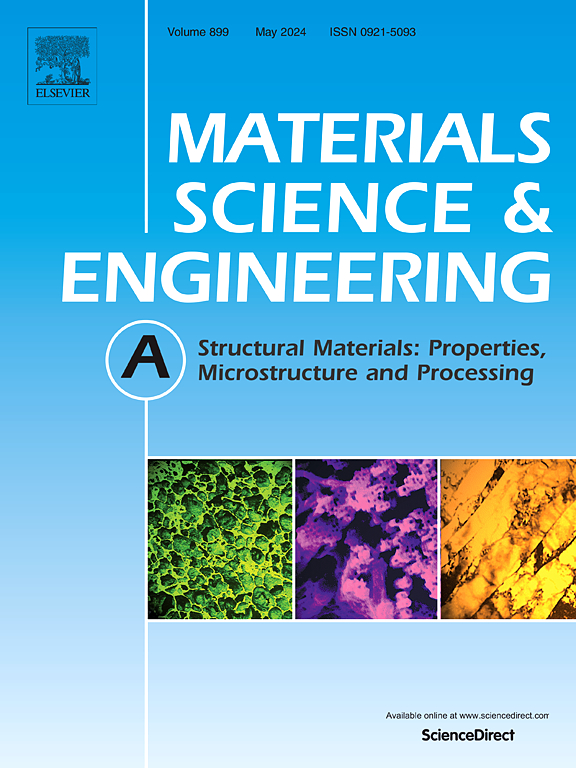Temperature-dependence of phase-selective recrystallization in eutectic high-entropy alloy and its mechanical effects
IF 7
2区 材料科学
Q1 MATERIALS SCIENCE, MULTIDISCIPLINARY
引用次数: 0
Abstract
Phase-selective recrystallization (PSR) is an effective strategy for improving the mechanical properties of eutectic high-entropy alloys (EHEAs). Via PSR treatment, the recovered hard phase and the recrystallized soft phase work together to fully release the strain-hardening capacity of EHEAs. However, few studies have focused on optimizing the PSR structures in EHEAs. In this study, we systematically investigated the effect of annealing temperature and rolling times on the PSR of Ni44Co10Cr12Fe15Al17W2 EHEA and obtained the processing window in PSR. At a lower annealing temperature of 800 °C, the annealed sample maintained a lamellar structure with both FCC and B2 phases recovered. As the annealing temperature increased to 1000 °C, the fully recrystallized FCC phase and the recovered B2 phase, that is, the PSR structure, were obtained after the second cold rolling and subsequent annealing. At 1200 °C, both FCC and B2 phases recrystallized into equiaxed grains. The PSR sample showed a doubled ductility of 27 % and a similar yield strength of 868 MPa compared to the as-cast sample. Our strengthening and fracture mechanisms analysis showed that the high strength of PSR EHEA mainly came from the boundary-strengthening of the lamellar structure, and the reduced crack nucleation sites caused by the PSR structure ensured its excellent ductility. These findings indicated that the properties of the EHEA could be further improved using PSR treatment for a wide range of engineering applications.
共晶高熵合金相选择再结晶的温度依赖性及其力学效应
相选择再结晶(PSR)是改善共晶高熵合金力学性能的有效方法。通过PSR处理,恢复的硬相和再结晶的软相共同作用,充分释放EHEAs的应变硬化能力。然而,很少有研究关注EHEAs中PSR结构的优化。在本研究中,我们系统地研究了退火温度和轧制次数对Ni44Co10Cr12Fe15Al17W2 EHEA的PSR的影响,并获得了PSR中的加工窗口。在较低的800℃退火温度下,退火后的样品保持了FCC相和B2相的片层结构。当退火温度升高到1000℃时,经过二次冷轧后退火,得到完全再结晶的FCC相和恢复的B2相,即PSR组织。在1200℃时,FCC相和B2相均再结晶为等轴晶。与铸态试样相比,PSR试样的延展性提高了一倍,达到27%,屈服强度为868 MPa。我们的强化和断裂机制分析表明,PSR EHEA的高强度主要来自于层状组织的边界强化,而PSR组织导致的裂纹形核位点的减少保证了其优异的延展性。这些发现表明,采用PSR处理可以进一步改善EHEA的性能,并在广泛的工程应用中得到应用。
本文章由计算机程序翻译,如有差异,请以英文原文为准。
求助全文
约1分钟内获得全文
求助全文
来源期刊

Materials Science and Engineering: A
工程技术-材料科学:综合
CiteScore
11.50
自引率
15.60%
发文量
1811
审稿时长
31 days
期刊介绍:
Materials Science and Engineering A provides an international medium for the publication of theoretical and experimental studies related to the load-bearing capacity of materials as influenced by their basic properties, processing history, microstructure and operating environment. Appropriate submissions to Materials Science and Engineering A should include scientific and/or engineering factors which affect the microstructure - strength relationships of materials and report the changes to mechanical behavior.
 求助内容:
求助内容: 应助结果提醒方式:
应助结果提醒方式:


